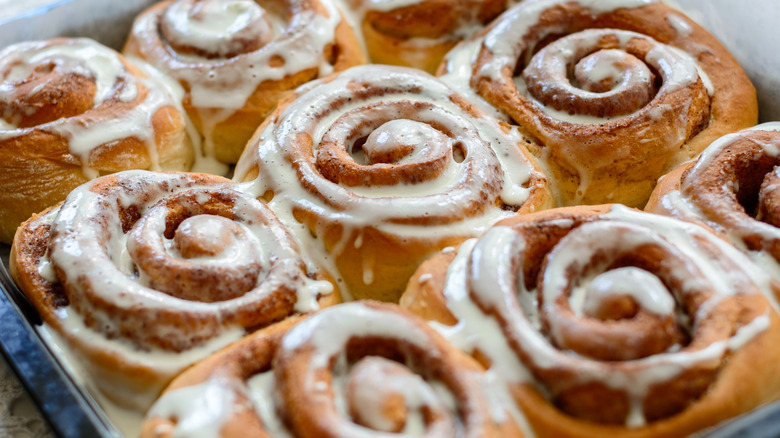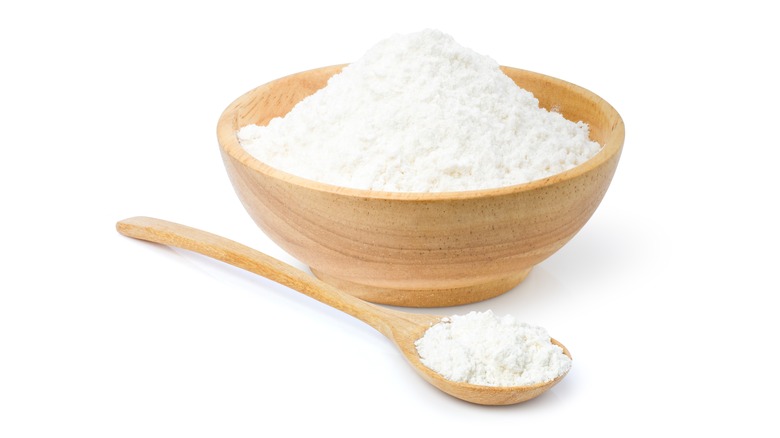The Extra Ingredient That Will Help Your Cinnamon Rolls Brown
Cinnamon rolls have a special way of filling the house with divine smells and big smiles. Whether it's Christmas morning, a special Saturday, or even a casual weekday breakfast, their magnificent flavor, tender texture, and beautiful swirls are sure to sweeten up the day and start it in the best way.
In fact, there are more creative ways than one to make these breakfast delights. Of course, you've got the classic, using a cinnamon, sugar, and butter mixture, along with a simple yeasted dough that requires proofing and rising before baking and topped with a silky sugar glaze. However, there are also some creative flavors to take on if you're wanting some extra spice in your life — like Red Velvet Cinnamon Rolls, Raspberry Cinnamon Rolls, and even Vegan Cinnamon Rolls. These variations are a fun take on such a popular pastry, but there's a reason the original still remains so loved.
Some like their cinnamon rolls on the doughy side, while some prefer them well-done. If you are the latter, one simple ingredient could take your go-to homemade cinnamon roll recipe from good to great with the perfect golden brown hue, without risking overcooking them and sacrificing texture.
Baking soda to the rescue
Baking soda's special power when it comes to baking is browning, according to The Spruce Eats. Adding baking soda to your yeasted cinnamon roll dough will help it brown quicker in the oven. This is because the leavening agent balances the pH in the dough, which promotes the Maillard reaction when exposed to heat. When incorporating baking soda into baked goods, it typically raises the pH levels while lowering the amount of gluten present, reducing the chewiness and yielding a more tender texture (per Bob's Red Mill).
Cinnamon rolls don't normally require baking soda or even baking powder, as they only really need the yeast to do the work in terms of rising, proofing, and creating texture, explains Pastry Chef Online. This is why the browning does not occur quickly compared to other recipes that use baking soda such as quick breads, cookies, and muffins. Furthermore, if you've ever noticed that soft pretzels and bagels are golden brown on the outside, yet tender and soft with pillow-y insides, it's because they too use baking soda to create this appearance (via Uncle Henry).
The next time you're in doubt about achieving the perfect golden brown hue on your next batch of breakfast rolls, a touch of baking soda should do the trick.

